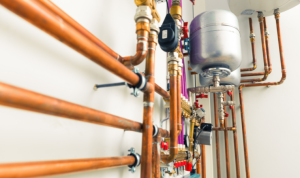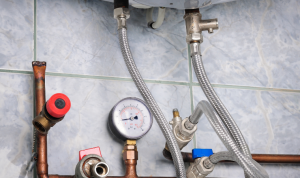Galvanized vs Copper Pipes: What’s the Difference?
When it comes to home plumbing, the type of pipe material used can significantly impact the system’s longevity, safety, and maintenance needs. Two common materials you’ll find in older and newer plumbing systems are galvanized and copper pipes. Each comes with its own advantages, drawbacks, and ideal use cases.
Understanding the key differences in galvanized vs copper pipes can help you decide which is best for your home, especially if you’re planning a renovation, dealing with low water pressure, or replacing outdated plumbing.
What Are Galvanized Pipes?
Galvanized pipes are made from steel and coated with a layer of zinc to prevent rust and corrosion. They were commonly used in homes from the 1930s through the 1980s as a replacement for lead pipes, which were phased out due to health concerns.
Pros of Galvanized Pipes:
- Strong and durable
- Less expensive at the time of installation (historically)
- Resistant to physical damage
Cons of Galvanized Pipes:
- Prone to internal corrosion and buildup over time
- Reduced water pressure due to scale inside the pipe
- Can release rust into water supply
- Difficult to cut, repair, or thread
- Often reaches the end of its life after 40–50 years
Homes with galvanized plumbing often experience discoloration in the water (yellow or brown tint) and uneven water pressure, especially on upper floors.

What Are Copper Pipes?
Copper pipes have become the industry standard in modern plumbing due to their reliability, resistance to corrosion, and safety. They are used in both hot and cold water lines and are known for their longevity.
Pros of Copper Pipes:
- Long-lasting (50+ years)
- Naturally resistant to corrosion
- Lightweight and easy to work with
- Doesn’t affect water taste or color
- Recyclable and environmentally friendly
Cons of Copper Pipes:
- More expensive than other materials
- Can be damaged by extremely acidic or hard water
- May require special fittings and insulation in cold climates
- Vulnerable to theft in some areas due to scrap metal value
In addition to being safe and clean, copper pipes offer greater performance consistency, especially in newer construction where water pressure and flow are key.
Galvanized vs Copper Pipes: Which Is Better?
When comparing galvanized vs copper pipes, the choice largely depends on your situation. If you live in an older home with galvanized plumbing, you may already be experiencing the drawbacks, like poor pressure, water discoloration, or even leaks. In such cases, switching to copper (or PEX in some modern systems) is often the best long-term solution.
For new installations or renovations, copper is typically preferred due to its durability, safety, and low maintenance needs. It’s more expensive upfront but offers better performance and fewer problems over the years.
If your home has a mix of both types, it’s also important to be cautious. Joining galvanized and copper pipes incorrectly can lead to galvanic corrosion, a reaction that accelerates wear and leakage at the connection points.
How to Know What Type of Pipes You Have
Not sure what kind of pipes are running through your home? Here are a few tips:
- Galvanized: Magnetic, dull gray, threaded ends, prone to rust buildup
- Copper: Reddish-brown color, non-magnetic, smooth surface, often soldered
If your pipes are hidden behind walls, a professional inspection or small access cut may be necessary to confirm the material.

Call Now for Pipe Inspection or Repiping Services
Whether you’re unsure about your current plumbing or ready to upgrade to modern, safer piping, it’s best to get expert advice.
Call (207) 814-8908 today to schedule a pipe inspection, replacement consultation, or full repiping service. Our licensed plumbers will help you make the right choice for lasting results.
Also Read:
